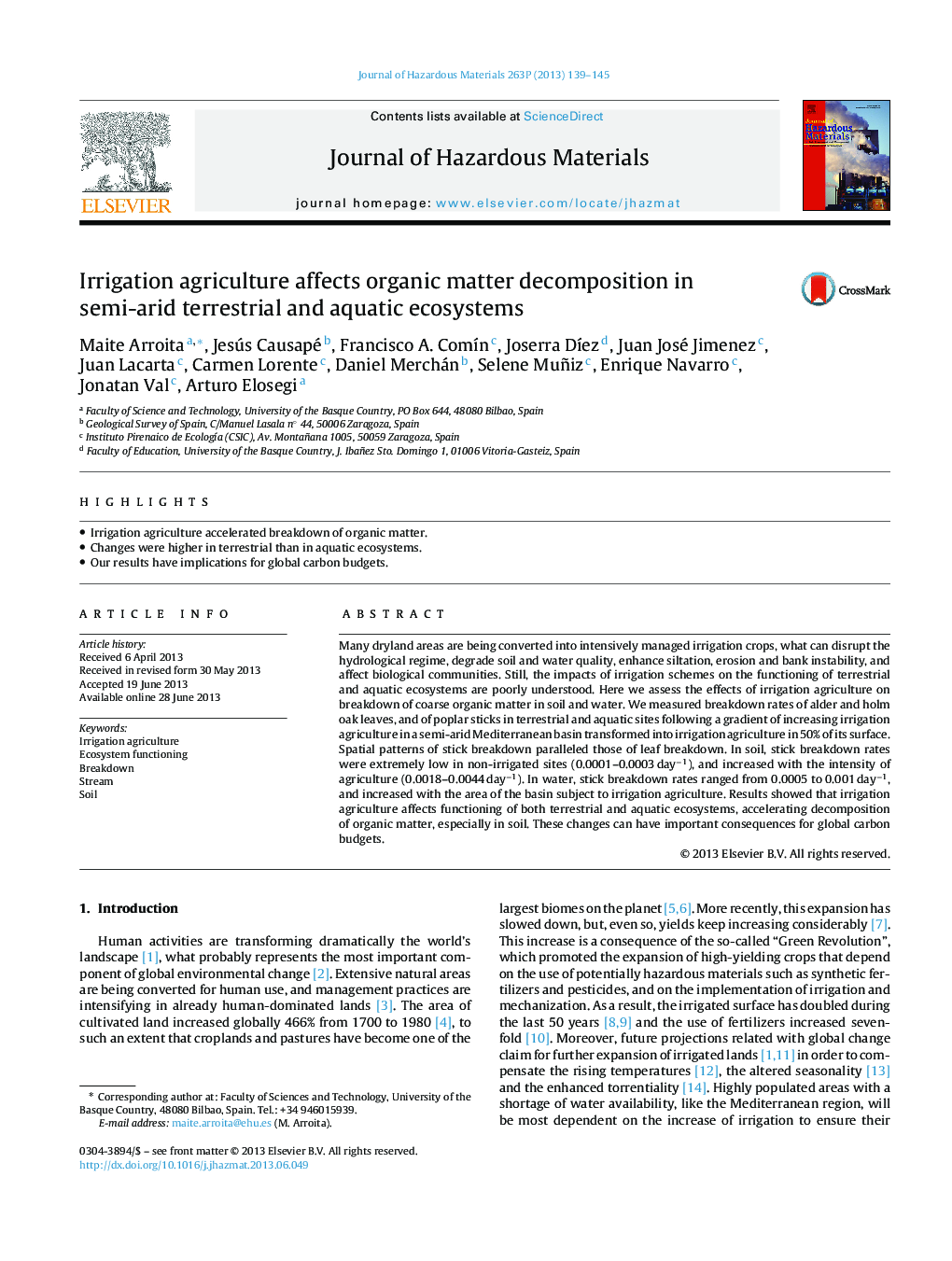| Article ID | Journal | Published Year | Pages | File Type |
|---|---|---|---|---|
| 577086 | Journal of Hazardous Materials | 2013 | 7 Pages |
Abstract
Many dryland areas are being converted into intensively managed irrigation crops, what can disrupt the hydrological regime, degrade soil and water quality, enhance siltation, erosion and bank instability, and affect biological communities. Still, the impacts of irrigation schemes on the functioning of terrestrial and aquatic ecosystems are poorly understood. Here we assess the effects of irrigation agriculture on breakdown of coarse organic matter in soil and water. We measured breakdown rates of alder and holm oak leaves, and of poplar sticks in terrestrial and aquatic sites following a gradient of increasing irrigation agriculture in a semi-arid Mediterranean basin transformed into irrigation agriculture in 50% of its surface. Spatial patterns of stick breakdown paralleled those of leaf breakdown. In soil, stick breakdown rates were extremely low in non-irrigated sites (0.0001-0.0003Â dayâ1), and increased with the intensity of agriculture (0.0018-0.0044Â dayâ1). In water, stick breakdown rates ranged from 0.0005 to 0.001Â dayâ1, and increased with the area of the basin subject to irrigation agriculture. Results showed that irrigation agriculture affects functioning of both terrestrial and aquatic ecosystems, accelerating decomposition of organic matter, especially in soil. These changes can have important consequences for global carbon budgets.
Related Topics
Physical Sciences and Engineering
Chemical Engineering
Chemical Health and Safety
Authors
Maite Arroita, Jesús Causapé, Francisco A. ComÃn, Joserra DÃez, Juan José Jimenez, Juan Lacarta, Carmen Lorente, Daniel Merchán, Selene Muñiz, Enrique Navarro, Jonatan Val, Arturo Elosegi,
